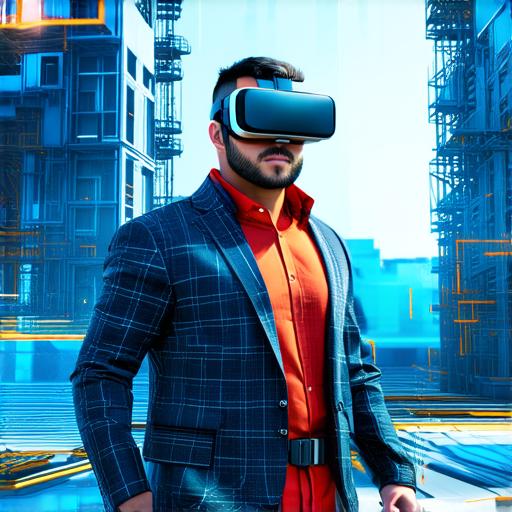
How can the construction industry make use of virtual reality?
Virtual reality (VR) is a rapidly advancing technology that has the potential to revolutionize many industries, including construction. In this article, we will explore how VR can be used to improve project management, design, and safety in the construction industry.
One of the main benefits of using VR in construction is its ability to allow architects and builders to visualize their projects in a 3D environment. By creating realistic simulations of their designs, they can identify potential issues before they become problems, such as design flaws or clashes between different components.
This helps them make more informed decisions about materials, construction methods, and timelines.
For example, a builder could use VR to simulate the construction process of a building, identifying potential bottlenecks or design flaws early on. This can help reduce delays and improve overall efficiency.
Additionally, VR can be used to create realistic simulations of different materials and building systems, allowing architects and builders to test their designs before they are built.
Another way that VR is being used in the construction industry is for training purposes. Workers can use VR simulations to practice their skills in a safe environment, without putting themselves or others at risk.
For example, workers could use VR to practice operating heavy machinery or driving a crane, giving them the confidence they need to perform these tasks safely on a real construction site.
In addition, VR can be used to improve safety on construction sites by allowing workers to experience potential hazards and learn how to avoid them. This can help reduce accidents and injuries on the job.
For example, a worker could use VR to simulate working near a scaffolding, learning how to avoid falling objects or tripping over loose materials.
One of the most exciting applications of VR in construction is in the design process. Architects can use VR to create realistic simulations of their designs, allowing clients and builders to experience them before they are built.
This can help reduce the number of changes made during the construction process, saving time and money.
For example, an architect could use VR to simulate a building’s interior design, allowing clients to see how furniture and decor will fit into the space. This can help reduce the need for extensive revisions later on in the project, saving time and money.

Another way that VR can be used in construction is for remote collaboration. With VR, architects and builders can work together on a project even if they are located in different parts of the world. This can help speed up the construction process and reduce costs.
For example, an architect in New York could use VR to work with a builder in China, providing real-time feedback on the design and construction progress.
One example of how VR is being used in construction is by Skanska, a Swedish construction company. They have been using VR to improve project management and reduce costs. By using VR simulations, they can identify potential issues early on in the construction process, reducing the need for expensive repairs later on.
They have also used VR to train their workers, allowing them to practice their skills in a safe environment.
In conclusion, virtual reality has many applications in the construction industry, from design and planning to training and safety. By using VR simulations, architects and builders can identify potential issues before they become problems, reduce costs, and improve worker safety. As VR technology continues to evolve, we can expect to see even more innovative uses of VR in the construction industry in the future.


